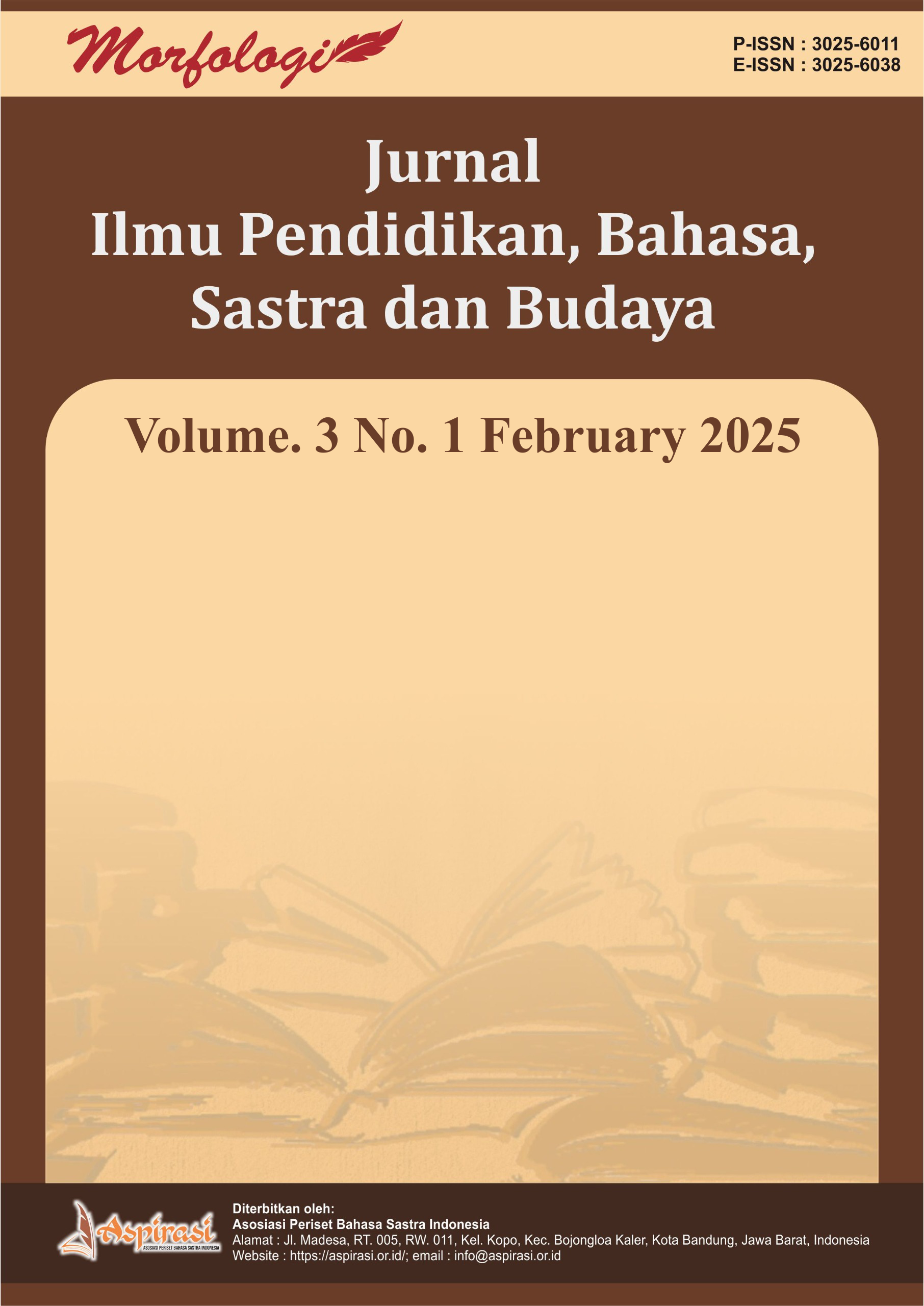Analisis Makna Semantik dalam Syi’ir Tanpo Waton Karya KH. Muhammad Nizam As-Shofa
DOI:
https://doi.org/10.61132/morfologi.v3i1.1303Keywords:
Leech, Semantic Meaning, Syi'ir Tanpo WatonAbstract
This study aims to analyze seven semantic meanings in Syi'ir Tanpo Waton by KH Muhammad Nizam As-Shofa using Leech's theory of meaning. The method used is descriptive qualitative, with data in the form of words, phrases, and sentences in the text of the poem accessed through the NU Online page. The results of the study indicate that Syi'ir Tanpo Waton contains various types of semantic meanings, namely conceptual, connotative, social, affective, reflective, collocative, and thematic meanings. The most dominant conceptual and connotative meanings describe the vertical relationship between humans and God, as well as deep spiritual values. The social meaning emphasizes inclusiveness and Javanese culture, while the affective meaning reflects religious emotions in the form of praise, prayer, and hope. The reflective meaning shows layers of multiple meanings, while the collocative meaning builds associations of related words. Thematic meaning emphasizes the urgency of worship, knowledge, and praise to God as the main themes.
Downloads
References
Abdussamad, Z. (2021). Metode penelitian kualitatif. Syakir Media Press.
Anam, A. K. (2011). Misteri "Syi’ir Tanpo Waton" Gus Dur (1). https://nu.or.id/warta/misteri-ampldquosyiamprsquoir-tanpo-watonamprdquo-gus-dur-1-HjPs3
Aziz, A. R. (2017). Analisis pesan dakwah dalam Syair Tanpo Waton karya K.H. Mohammad Nizam as-Shofa [UIN Walisongo Semarang]. https://eprints.walisongo.ac.id/id/eprint/7090/
Buhori, A. (2016). Syi’ir Tanpo Waton dalam pandangan tasawuf [UIN Sunan Kalijaga Yogyakarta]. https://digilib.uin-suka.ac.id/id/eprint/24207/
Chaer, A. (2014). Linguistik umum. Rineke Cipta.
Dhanawaty, N. M., Satyawati, M. S., & Widarsini, N. P. N. (2017). Pengantar linguistik umum. Pustaka Larasan.
Griffiths, P. (2006). An introduction to English semantics and pragmatics. Edinburgh University Press.
Husba, Z. M. (2010). Ragam diksi dalam terjemah syair Bula Malino, 13-14.
Khafidhi, Y. (2016). Pesan nilai-nilai pendidikan Islam dalam Syair Tanpo Waton KH. Mohammad Nizam As-Shofa [STAIN Pekalongan]. http://etheses.uingusdur.ac.id/6823/1/2021112139_YUSRO_KHAFIDHI_BAB_I%2C_V_DAN_LAMP_1.PDF
Kridalaksana, H. (1982). Kamus linguistik umum, 24.
Leech, G. (1981). Semantics: The study of meaning. Penguin Books.
Saleh, S. (2017). Analisis data kualitatif. Pustaka Ramadhan.
Verhaar, J. W. M. (2012). Asas-asas linguistik umum. Gadjah Mada University Press.
Wijana, I. D. P. (1996). Dasar-dasar pragmatik. ANDI.
Wijana, I. D. P. (2019). Pengantar semantik bahasa Indonesia. Program Studi S2 Linguistik Fakultas Ilmu Budaya Universitas Gadjah Mada.
Yanda, D. P., & D. R. (2017). Pengantar kajian semantik. Deepublish.
Downloads
Published
How to Cite
Issue
Section
License
Copyright (c) 2024 Morfologi: Jurnal Ilmu Pendidikan, Bahasa, Sastra dan Budaya

This work is licensed under a Creative Commons Attribution-ShareAlike 4.0 International License.





